ASGER JORN (1914-1973)Douleur silencieuse 1960 signé huile sur toile signed oil on canvas 61.5 x 90 cm. 24 3/16 x 35 7/16 in. Réalisé en 1960.FootnotesCette œuvre est enregistrée dans les archives du Museum Jorn, Silkeborg. Provenance Galerie Ariel, Paris Collection particulière, Europe Vente : Christie's, Amsterdam, Post War and Contemporary Art, 15 mai 2012, lot 2 Die Galerie, Frankfort Acquis auprès de celle-ci par le propriétaire actuel Exposition Rome, La Medusa, Studio d'Arte Contemporanea, Asger Jorn opere scelte dal 1950 al 1960, 1961 Bibliographie M. Ragon, Asger Jorn Cimaise, art et architecture actuels, N° 51, Paris 1961, p. 54, illustré en noir et blanc G. Atkins, Asger Jorn the crucial years 1954-1964, Paris 1977, n° 1260, n.p., illustré en noir et blanc Asger Jorn est un des plus importants artistes danois du XXe siècle. En 1936, il arrive à Paris et intègre l'atelier de Fernand Léger puis collabore au décor du Pavillon des Temps Nouveaux à l'exposition universelle sous la direction du Corbusier. Il retourne au Danemark pendant la guerre et apprend les leçons des grands maîtres de l'abstraction tels que Vassily Kandinsky Paul Klee ou encore Joan Miro avant de revenir en France en 1947. En 1948, il devient le membre fondateur du mouvement Cobra dont il sera le théoricien. Cette année marque également sa première exposition personnelle à Paris à la galerie Breteau. Entre les années 1950 et 1960, il joue un rôle fondamental dans plusieurs mouvements d'Avant-Garde : Le Mouvement International pour un Bauhaus imaginiste (1953-1957) et l'Internationale situationniste (1957-1960). Cet engagement à la fois intellectuel et artistique démontre sa personnalité combattive et insatiable. En effet, il se battra toute sa vie pour la liberté totale de l'art. Cette œuvre est emblématique de la spontanéité et la liberté si chères au cœur de Jorn. Une liberté qui transparait par une peinture vive, intense et colorée exprimant la violence, le désespoir de ce monde. Un an après sa réalisation, cette œuvre est reproduite dans le numéro 51 de Cimaise, revue de référence consacrée à l'actualité de l'art contemporain écrite par Michel Ragon, critique d'art et ami de Jorn. En 1961, cette œuvre est aussi exposée à Rome à Lo Studio D'Arte La Medusa lors d'une exposition consacrée aux œuvres de Jorn entre 1950 et 1961. Cette œuvre à l'image de son auteur a sillonné et séduit le marché de l'art. Asger Jorn is regarded as one of Denmark's most influential artists of the twentieth century. In 1936, he arrived in Paris and joined Fernand Léger's studio, then worked on the décor of the New Times Pavilion at the Universal Exhibition under the direction of Le Corbusier. He returned to Denmark during the war and learned from the great masters of Abstract Art such as Vassily Kandinsky Paul Klee and Joan Miro before returning to France in 1947. In 1948, he became a founding member of the Cobra movement, of which he was the theoretician. This year also marks his first solo exhibition in Paris at the Breteau Gallery. Between the 1950s and 1960s, he played a fundamental role in several Avant-Garde movements: the International Movement for an Imaginative Bauhaus (1953-1957) and the Situationist International (1957-1960). This commitment, both intellectual and artistic, demonstrates his strong-minded and proactive personality. Indeed, he will fight for absolute artistic freedom throughout his life. This artwork is emblematic of the spontaneity and freedom so dear to Jorn's heart. A freedom that manifests through in a lively, intense and colourful painting that expresses the violence and despair of this world. A year after its creation, this piece was reproduced in issue 51 of Cimaise, a reference review of contemporary art written by Michel Ragon, art critic and friend of Jorn. In 1961, this work was also displayed in Rome at Lo Studio D'Arte La Medusa in an exhibition devoted to Jorn's work between 1950 and 1961. This work, just like its author, has
ASGER JORN (1914-1973)Douleur silencieuse 1960 signé huile sur toile signed oil on canvas 61.5 x 90 cm. 24 3/16 x 35 7/16 in. Réalisé en 1960.FootnotesCette œuvre est enregistrée dans les archives du Museum Jorn, Silkeborg. Provenance Galerie Ariel, Paris Collection particulière, Europe Vente : Christie's, Amsterdam, Post War and Contemporary Art, 15 mai 2012, lot 2 Die Galerie, Frankfort Acquis auprès de celle-ci par le propriétaire actuel Exposition Rome, La Medusa, Studio d'Arte Contemporanea, Asger Jorn opere scelte dal 1950 al 1960, 1961 Bibliographie M. Ragon, Asger Jorn Cimaise, art et architecture actuels, N° 51, Paris 1961, p. 54, illustré en noir et blanc G. Atkins, Asger Jorn the crucial years 1954-1964, Paris 1977, n° 1260, n.p., illustré en noir et blanc Asger Jorn est un des plus importants artistes danois du XXe siècle. En 1936, il arrive à Paris et intègre l'atelier de Fernand Léger puis collabore au décor du Pavillon des Temps Nouveaux à l'exposition universelle sous la direction du Corbusier. Il retourne au Danemark pendant la guerre et apprend les leçons des grands maîtres de l'abstraction tels que Vassily Kandinsky Paul Klee ou encore Joan Miro avant de revenir en France en 1947. En 1948, il devient le membre fondateur du mouvement Cobra dont il sera le théoricien. Cette année marque également sa première exposition personnelle à Paris à la galerie Breteau. Entre les années 1950 et 1960, il joue un rôle fondamental dans plusieurs mouvements d'Avant-Garde : Le Mouvement International pour un Bauhaus imaginiste (1953-1957) et l'Internationale situationniste (1957-1960). Cet engagement à la fois intellectuel et artistique démontre sa personnalité combattive et insatiable. En effet, il se battra toute sa vie pour la liberté totale de l'art. Cette œuvre est emblématique de la spontanéité et la liberté si chères au cœur de Jorn. Une liberté qui transparait par une peinture vive, intense et colorée exprimant la violence, le désespoir de ce monde. Un an après sa réalisation, cette œuvre est reproduite dans le numéro 51 de Cimaise, revue de référence consacrée à l'actualité de l'art contemporain écrite par Michel Ragon, critique d'art et ami de Jorn. En 1961, cette œuvre est aussi exposée à Rome à Lo Studio D'Arte La Medusa lors d'une exposition consacrée aux œuvres de Jorn entre 1950 et 1961. Cette œuvre à l'image de son auteur a sillonné et séduit le marché de l'art. Asger Jorn is regarded as one of Denmark's most influential artists of the twentieth century. In 1936, he arrived in Paris and joined Fernand Léger's studio, then worked on the décor of the New Times Pavilion at the Universal Exhibition under the direction of Le Corbusier. He returned to Denmark during the war and learned from the great masters of Abstract Art such as Vassily Kandinsky Paul Klee and Joan Miro before returning to France in 1947. In 1948, he became a founding member of the Cobra movement, of which he was the theoretician. This year also marks his first solo exhibition in Paris at the Breteau Gallery. Between the 1950s and 1960s, he played a fundamental role in several Avant-Garde movements: the International Movement for an Imaginative Bauhaus (1953-1957) and the Situationist International (1957-1960). This commitment, both intellectual and artistic, demonstrates his strong-minded and proactive personality. Indeed, he will fight for absolute artistic freedom throughout his life. This artwork is emblematic of the spontaneity and freedom so dear to Jorn's heart. A freedom that manifests through in a lively, intense and colourful painting that expresses the violence and despair of this world. A year after its creation, this piece was reproduced in issue 51 of Cimaise, a reference review of contemporary art written by Michel Ragon, art critic and friend of Jorn. In 1961, this work was also displayed in Rome at Lo Studio D'Arte La Medusa in an exhibition devoted to Jorn's work between 1950 and 1961. This work, just like its author, has

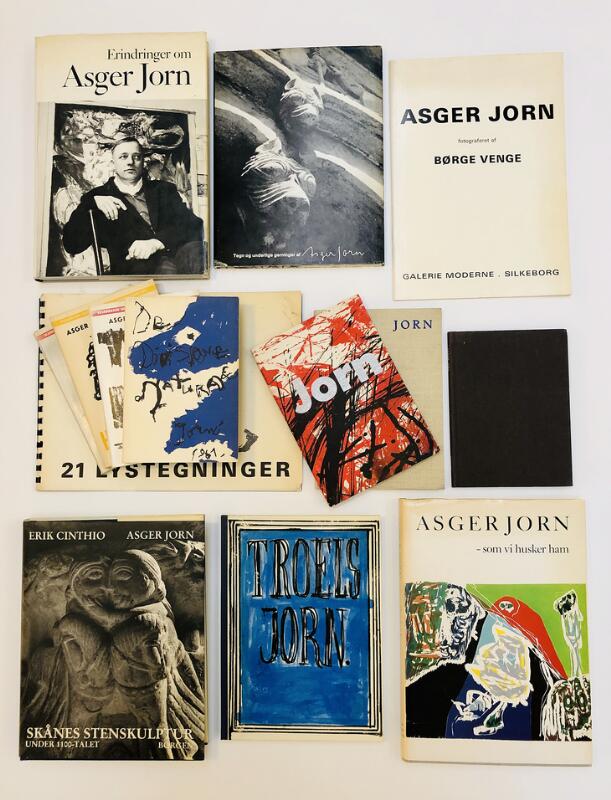
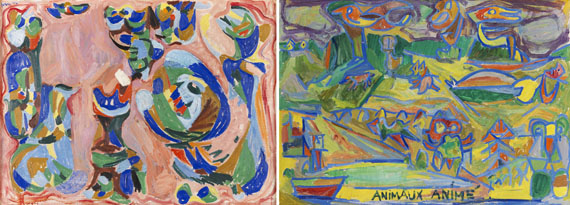

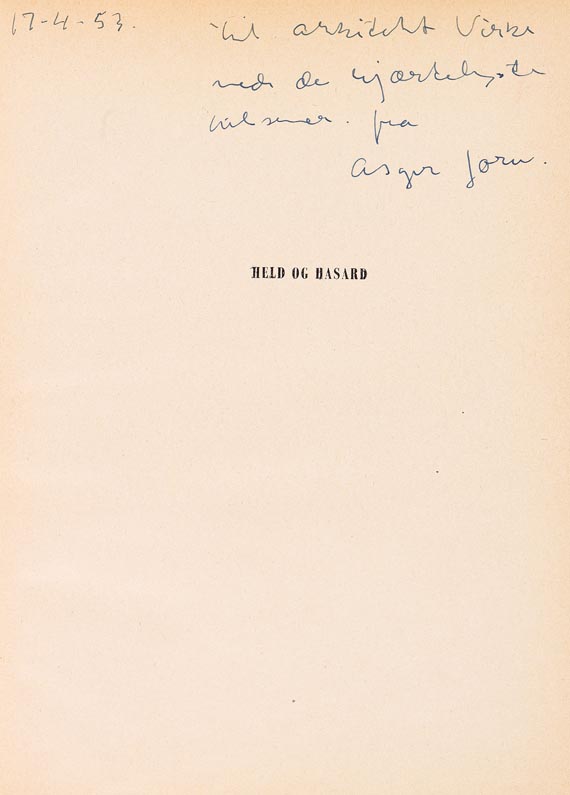
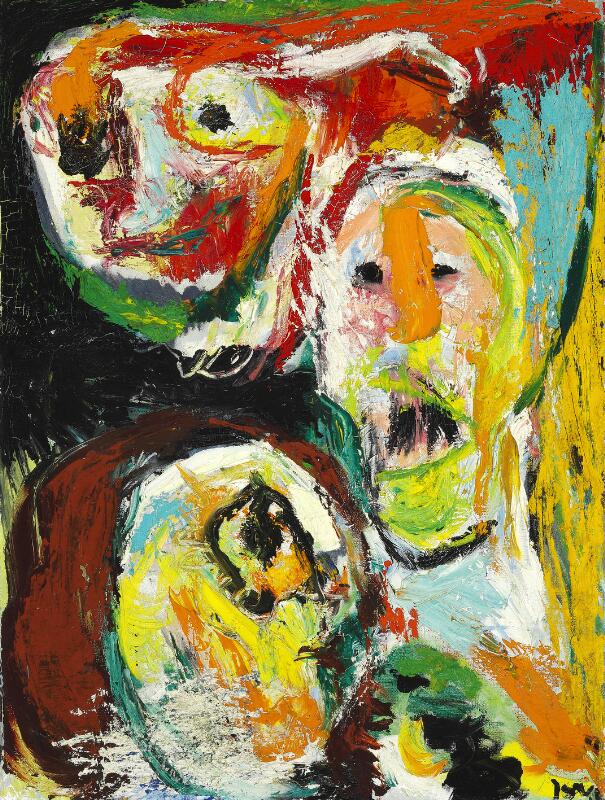
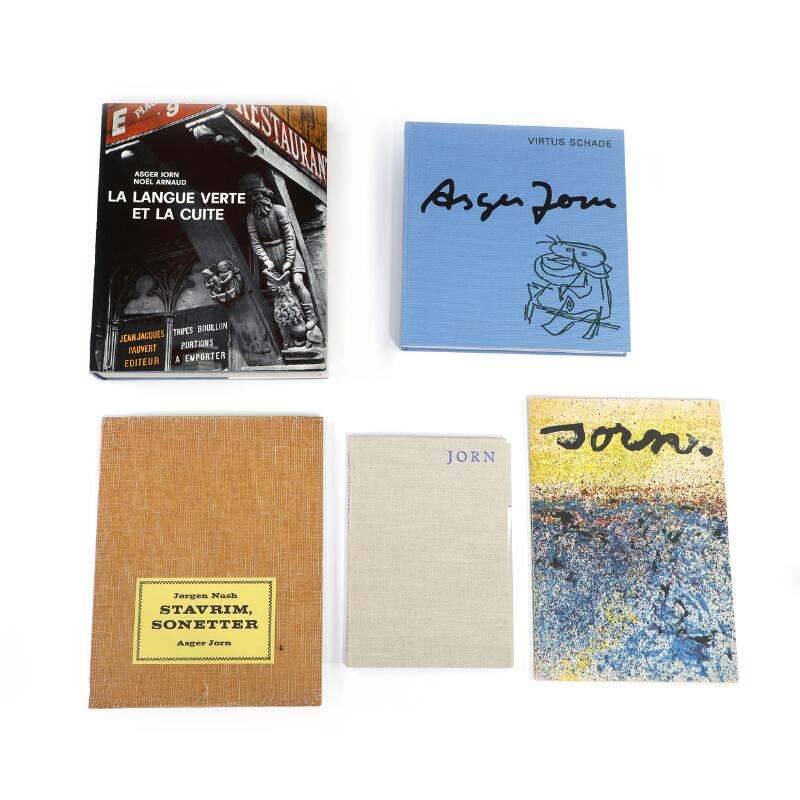
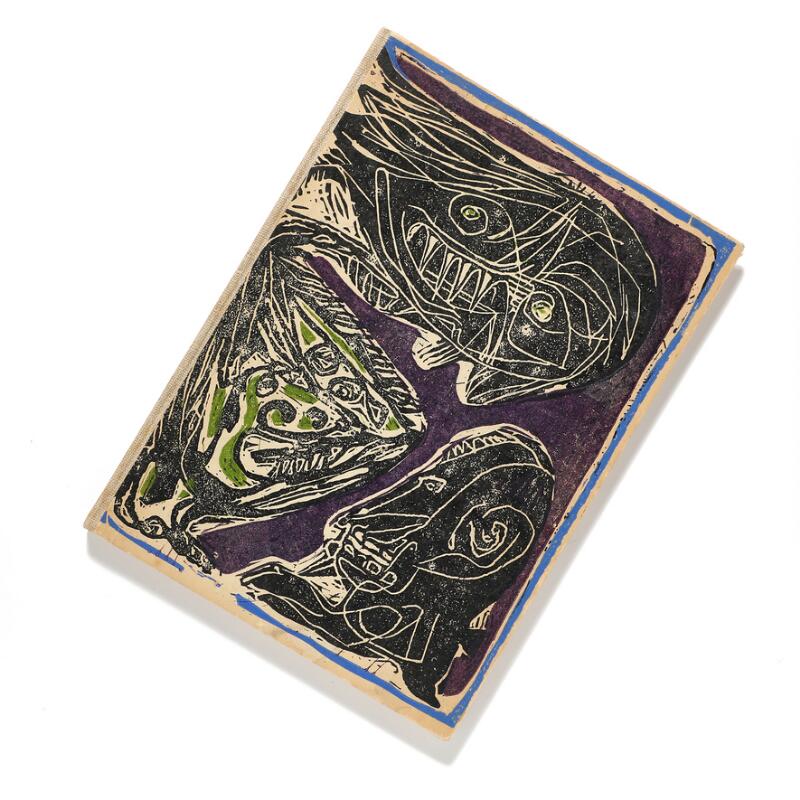

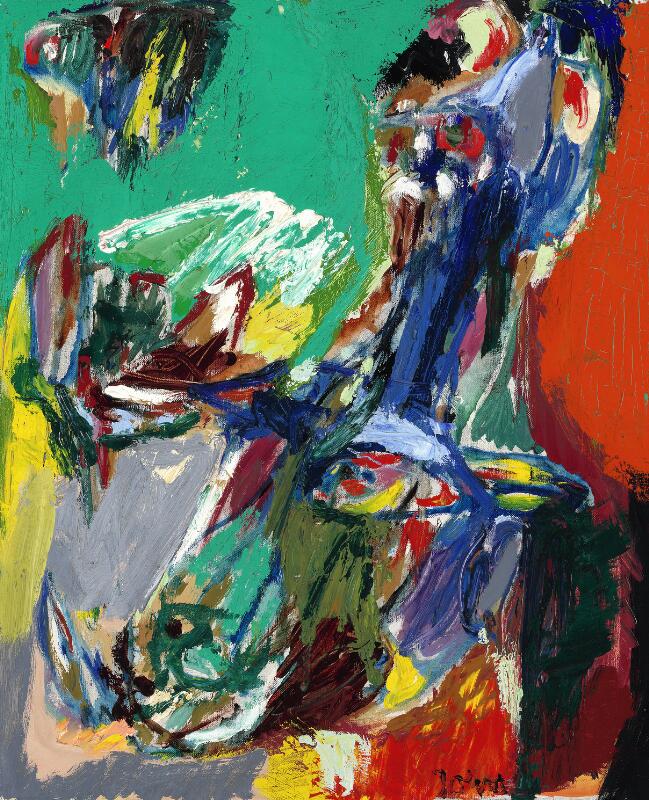



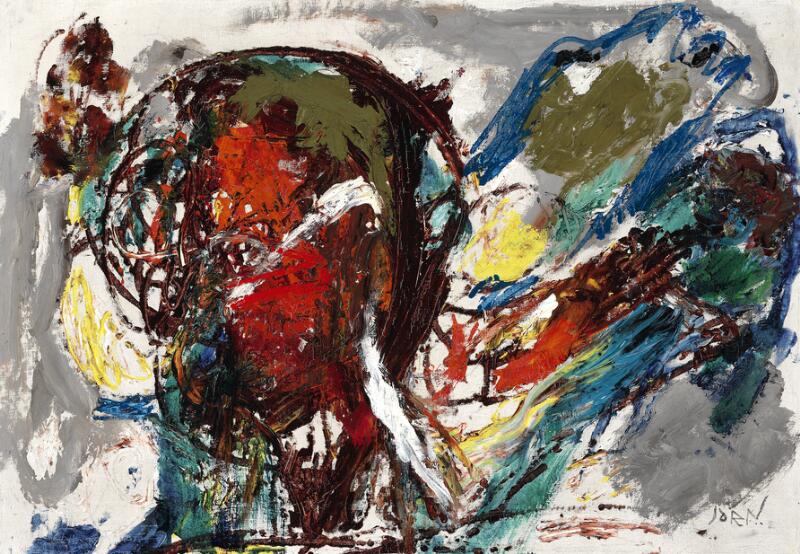
Testen Sie LotSearch und seine Premium-Features 7 Tage - ohne Kosten!
Lassen Sie sich automatisch über neue Objekte in kommenden Auktionen benachrichtigen.
Suchauftrag anlegen